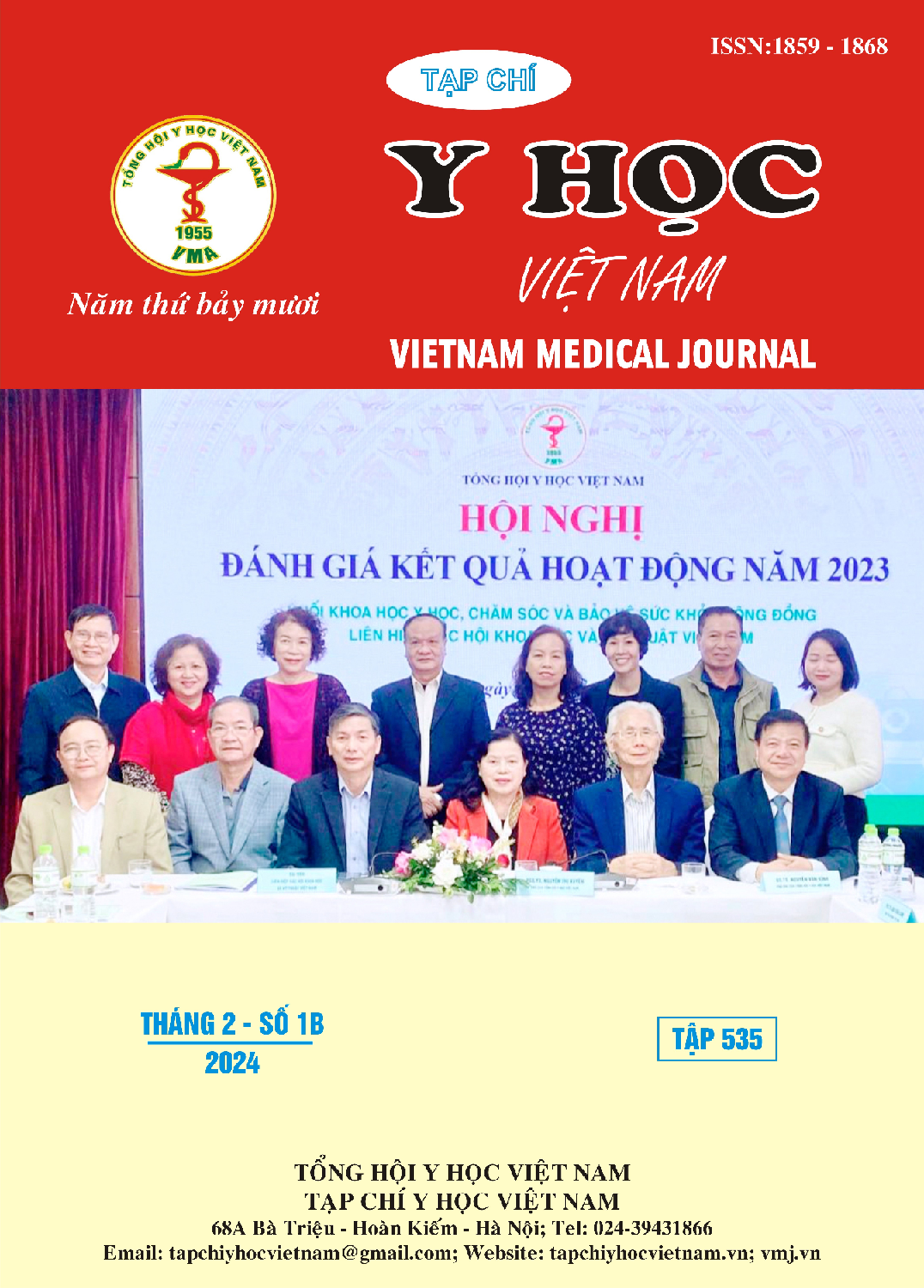BẤT THƯỜNG BÀO TƯƠNG NOÃN CÓ HẠT ẢNH HƯỞNG ĐẾN KẾT CỤC CỦA THỤ TINH TRONG ỐNG NGHIỆM
Nội dung chính của bài viết
Tóm tắt
Mục tiêu: Nghiên cứu nhằm phân tích ảnh hưởng của bất thường bào tương noãn có hạt trung tâm (Centrally located cytoplasmic granular - CLCG) lên tỷ lệ thụ tinh, chất lượng phôi ngày 2 và kết cục thai sinh sống của chu kỳ có hình thái noãn trên. Phương pháp nghiên cứu: Nghiên cứu tiến cứu tiến hành trên 231 chu kỳ ICSI tại Bệnh viện Chuyên Khoa Nam học và Hiếm muộn Hà Nội từ năm 2016 đến 2019. Các chu kỳ đều sử dụng tinh trùng xuất tinh trong ngày chọc hút và chất lượng tinh trùng đạt tiêu chuẩn WHO 2010 với tỷ lệ hình dạng bình thường tối thiểu 1%. Tỷ lệ thụ tinh và chất lượng phôi ngày 2 được so sánh giữa 4 nhóm noãn CLCG gồm: có đúng một bất thường, có ít nhất một bất thường, có đúng hai bất thường và có ít nhất hai bất thường. Tỷ lệ em bé sinh sống được theo dõi ở 150 chu kỳ tuổi mẹ dưới 35 và số lượng noãn dưới 15. Kết quả: Tỷ lệ thụ tinh của nhóm có ít nhất một bất thường (72,1%), nhóm có ít nhất hai bất thường (69,5%) và nhóm có đúng hai bất thường (70,3%) thấp hơn có ý nghĩa thống kê so với các noãn không cùng đặc điểm lần lượt là 79,0%, 81,7% và 80,8% (p< 0,05). Tỷ lệ phôi tốt ngày 2 của nhóm có ít nhất một bất thường (53,8%), nhóm có ít nhất hai bất thường (57,3%) và nhóm có đúng hai bất thường (49,5%) thấp hơn có ý nghĩa thống kê so với các noãn không cùng đặc điểm lần lượt là 65,8%; 76,5%; và 75,1% (p< 0,05). Tỷ lệ thai sinh sống giữa các chu kỳ có bất thường CLCG và không có CLCG không có sự khác biệt có ý nghĩa thống kê (57,6% so với 44,0%, p>0,05). Kết luận: CLCG là một đặc điểm bất thường noãn làm giảm tỷ lệ thụ tinh và có xu hướng làm giảm tỷ lệ phôi tốt hai ngày tuổi, tuy nhiên, chưa xác định được ảnh hưởng đến kết cục có em bé sinh sống với nhóm bệnh nhân trẻ tuổi và ít noãn.
Chi tiết bài viết
Từ khóa
bất thường bào tương noãn, bào tương hạt trung tâm, tỷ lệ thụ tinh, chất lượng phôi ngày 2, tỷ lệ thai sinh sống.
Tài liệu tham khảo
2. Nguyễn Mạnh Hà and Nguyễn Xuân Hợi, Đánh giá mối liên quan giữa hình thái noãn và chất lượng phôi trong thụ tinh ống nghiệm. Tạp chí nghiên cứu Y học, 2017. 107(2): p. 18-25.
3. Loutradis, D., et al., Oocyte morphology correlates with embryo quality and pregnancy rate after intracytoplasmic sperm injection. Fertil Steril, 1999. 72(2): p. 240-4.
4. Cooper, T. G., et al., World Health Organization reference values for human semen characteristics. Hum Reprod Update, 2010. 16(3): p. 231-45.
5. Alpha, S. i. R. M. a. E. S. I. G. o. E. and Conference, C. D., The Istanbul consensus workshop on embryo assessment: proceedings of an expert meeting. Hum Reprod, 2011. 26(6): p. 1270-83.
6. Hu, J., et al., Predictive value of cytoplasmic granulation patterns during in vitro fertilization in metaphase II oocytes: Part I, poor-prognosis patients. Fertility and Sterility, 2021. 116(2): p. 431-443.
7. Hu, J., et al., Predictive value of cytoplasmic granulation patterns during in vitro fertilization in metaphase II oocytes: part II, donor oocyte cycles. Fertil Steril, 2021. 116(5): p. 1330-1340.
8. Kahraman, S., et al., Relationship between granular cytoplasm of oocytes and pregnancy outcome following intracytoplasmic sperm injection. Hum Reprod, 2000. 15(11): p. 2390-3.
9. O’Neill, C., et al., Relevance of Oocyte Morphology on ICSI Outcomes, in Pick Up and Oocyte Management, A. Malvasi and D. Baldini, Editors. 2020, Springer International Publishing: Cham. p. 253-264.
10. French, D. B., et al., Does severe teratozoospermia affect blastocyst formation, live birth rate, and other clinical outcome parameters in ICSI cycles? Fertil Steril, 2010. 93(4): p. 1097-103.


